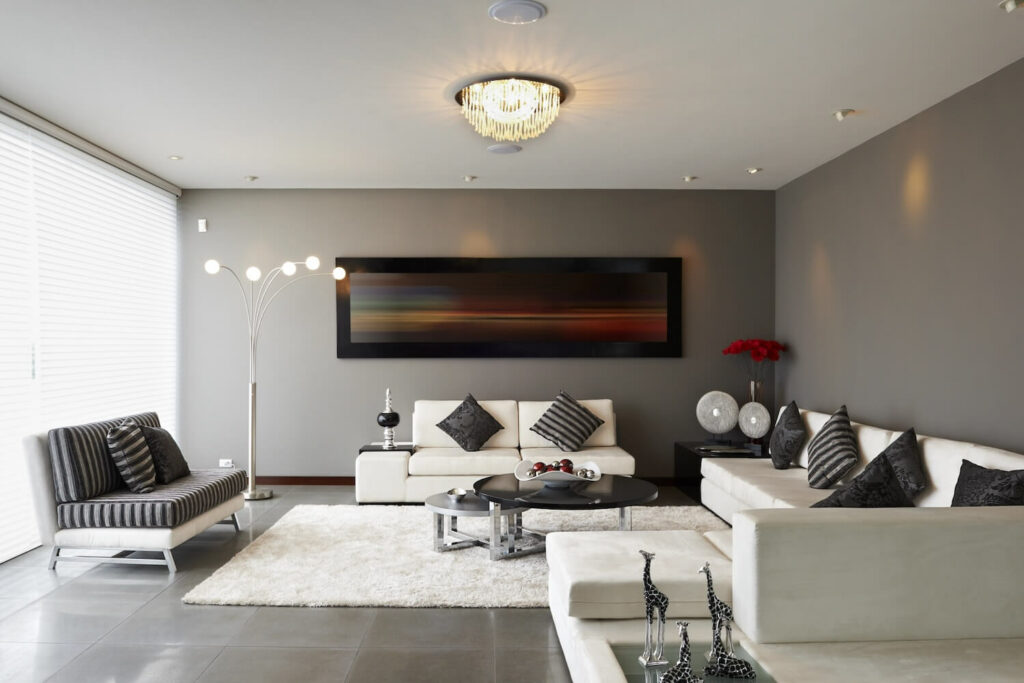
Selecting paint colors for your home can be an exciting yet daunting task. The right color scheme can transform a space, creating the ambiance and mood you desire, while the wrong choice can leave you feeling dissatisfied and frustrated. With countless options available, it’s essential to approach the process thoughtfully and strategically. To help you navigate the world of paint colors successfully, here are some dos and don’ts to consider when choosing paint colors for your home.
The Dos
1. Do Consider the Mood and Function of Each Room
Different rooms serve different purposes and evoke distinct moods. Consider the function of each space and choose paint colors that complement it. For instance, opt for calming, soothing hues like soft blues or greens for bedrooms, while vibrant, energetic colors like yellow or red can work well in areas like the kitchen or home office to inspire creativity and productivity.
2. Do Test Paint Samples
Never underestimate the importance of testing paint samples before committing to a color. Paint can look drastically different once applied to your walls compared to how it appears on a small swatch or in a paint can. Purchase small sample pots of your chosen colors and apply them to a small section of your wall to see how they look in various lighting conditions throughout the day.
3. Do Consider Lighting
Lighting plays a significant role in how paint colors appear in a room. Natural light, artificial light, and the direction your room faces can all impact the way colors are perceived. Take note of the lighting conditions in each room throughout the day and choose colors that complement the lighting environment. Cooler tones may appear more vibrant in rooms with ample natural light, while warmer tones can create a cozy atmosphere in rooms with limited natural light.
4. Do Create a Cohesive Color Palette
While it’s essential to choose colors that suit the function of each room, it’s also crucial to create a cohesive color palette throughout your home. Select a primary color that serves as the foundation for your design and then choose complementary colors for accent walls, trim, and accessories. This will create a sense of flow and harmony as you move from room to room.
5. Do Consider the Architecture and Style of Your Home
Take cues from the architecture and style of your home when selecting paint colors. Traditional homes may benefit from classic, timeless hues like soft neutrals or muted pastels, while modern spaces may lend themselves to bold, contrasting colors or minimalist palettes. Consider how your chosen colors will complement the overall aesthetic of your home to create a cohesive and visually appealing look.
6. Do Factor in the Furniture and Decor
When choosing paint colors, consider how they will interact with your existing furniture and decor. Take note of the colors and patterns already present in your space and select paint colors that complement and enhance these elements rather than competing with them. Neutral tones like white, beige, or gray can serve as versatile backdrops that allow your furniture and decor to take center stage.
7. Do Think About the Long-Term
While it can be tempting to follow the latest trends or opt for bold, statement-making colors, consider the long-term implications of your choices. Will you still love the color five years from now? Will it appeal to potential buyers if you decide to sell your home? Choose timeless, versatile colors that have longevity and can adapt to changing trends and personal preferences over time.
The Don’ts
1. Don’t Rush the Decision
Choosing paint colors for your home is not a decision to be made hastily. Take your time to explore different options, test paint samples, and envision how each color will look in your space. Rushing the decision can lead to regrets later on, so give yourself ample time to make an informed choice.
2. Don’t Ignore Undertones
Paint colors often have subtle undertones that can significantly impact how they appear in a room. Warm undertones like yellow or red can make a color feel cozy and inviting, while cool undertones like blue or gray can create a more serene atmosphere. Pay attention to the undertones of your chosen colors and ensure they complement the overall aesthetic you want to achieve.
3. Don’t Forget About Trim and Accent Colors
When choosing paint colors, it’s easy to focus solely on the walls and overlook the importance of trim and accent colors. Trim and accent colors can add depth and dimension to a room, so don’t forget to consider how they will complement your wall color choices. Opt for trim colors that contrast with your wall color to create visual interest and highlight architectural features.
4. Don’t Overlook Small Spaces
Even small spaces like hallways, closets, and bathrooms deserve careful consideration when it comes to choosing paint colors. While it may be tempting to stick with neutral tones in these areas, don’t be afraid to experiment with bolder colors or unique finishes to add personality and character to these often-overlooked spaces.
5. Don’t Ignore the Power of White
While it’s essential to inject color and personality into your home, don’t underestimate the power of white paint. White walls can make a space feel bright, airy, and expansive, serving as a versatile backdrop for any style or decor. Consider using white paint in rooms with limited natural light or as a base color to allow other elements in the room to shine.
6. Don’t Be Afraid to Seek Inspiration
If you’re feeling stuck or overwhelmed by the prospect of choosing paint colors, don’t hesitate to seek inspiration from design magazines, websites, or social media platforms like Pinterest. Create mood boards, gather swatches, and take note of color combinations that resonate with you. Drawing inspiration from various sources can help you narrow down your options and find the perfect color scheme for your home.
7. Don’t Ignore Your Instincts
Ultimately, choosing paint colors for your home is a personal decision, and it’s essential to trust your instincts. If a particular color speaks to you or evokes a specific emotion, don’t be afraid to go with your gut. Your home should reflect your personality and style, so choose colors that make you feel happy, comfortable, and inspired.
In conclusion, selecting paint colors for your home can be a rewarding process when approached thoughtfully and strategically. By considering the mood and function of each room, testing paint samples, and creating a cohesive color palette, you can create a space that feels cohesive, inviting, and uniquely yours. Avoid rushing the decision, pay attention to undertones, and don’t overlook the power of white paint. With these dos and don’ts in mind, you can confidently choose paint colors that enhance your home’s beauty and create a welcoming environment for years to come.
Read Other Blog Posts
How Color Consultations Contribute to a Cohesive Home Design
Designing a home involves a...
How to Estimate Exterior Painting Costs: A Guide for Homeowners
Giving your home a fresh coat...
Cabinet Resurfacing vs. Painting: Which is Right for You?
Updating your kitchen can...
Interior Painting vs. Wallpaper: Which is Right for Your Home?
Choosing the right wall...
Bring Life to Your Home with Expert Paint and Color Consult Services
Your home is more than just a...
How to Choose Exterior Paint Color that Complements Your Landscaping
Choosing the right exterior...






